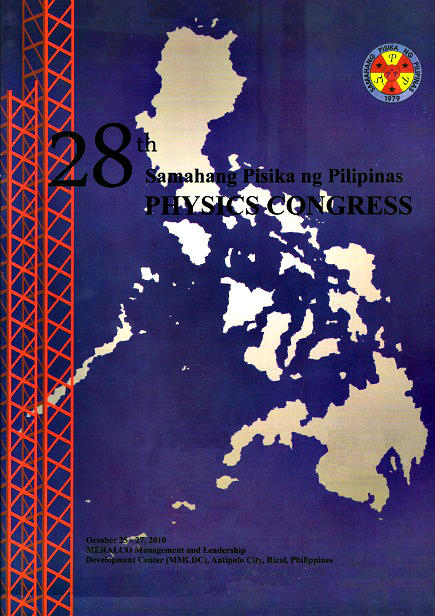Random sequential adsorption via image processing
Abstract
Image processing methods were used to implement three random sequential adsorption algorithms: naive, fast, and direct. It was shown that the direct deposition reaches the stopping time for the jamming limit with the fewest time steps. Since the three have the same final disk population, direct adsorption was used for jamming limit studies. It was found that the final coverage area converges to 50% at any disk radius for single sized disks.
Downloads
Issue
Strengthening physics research and education for a brighter tomorrow
25-27 October 2010, MERALCO Management and Leadership Development Center, Antipolo City











